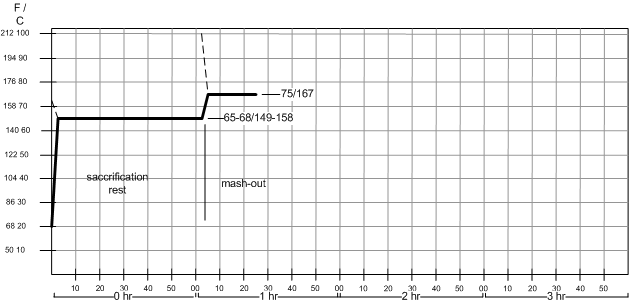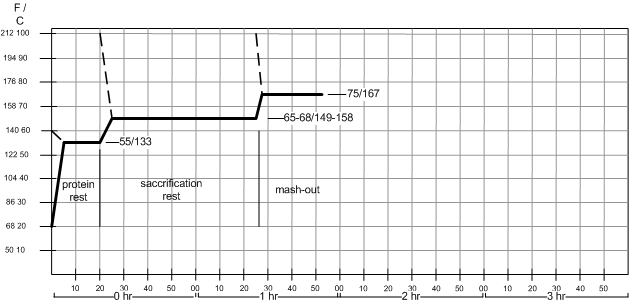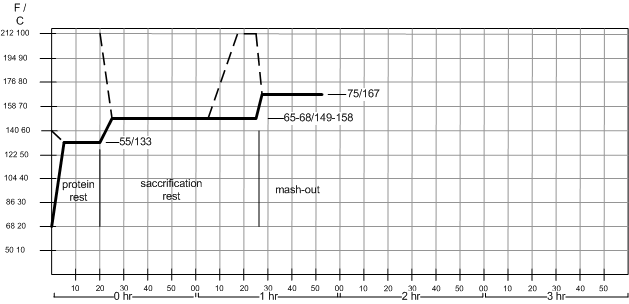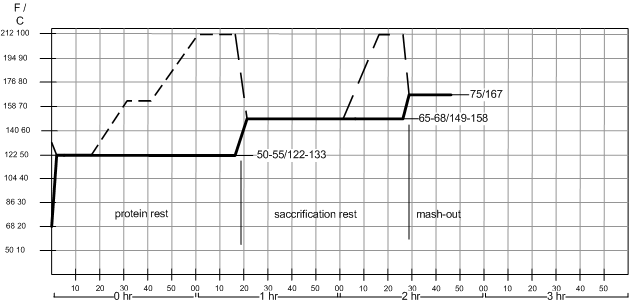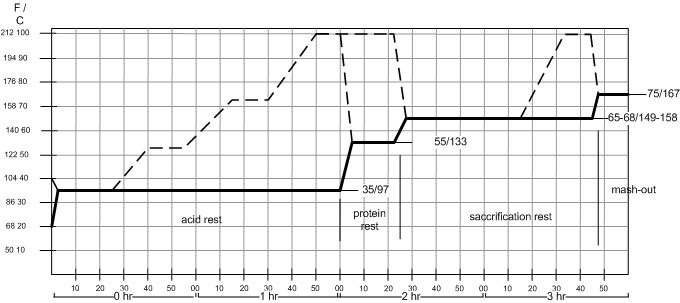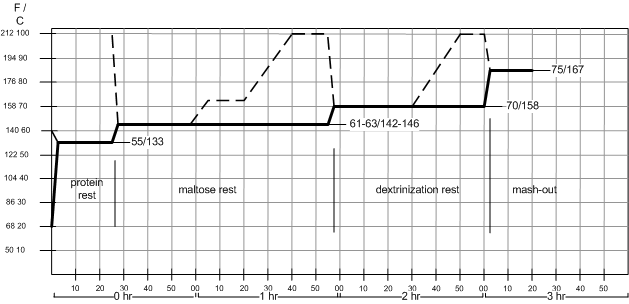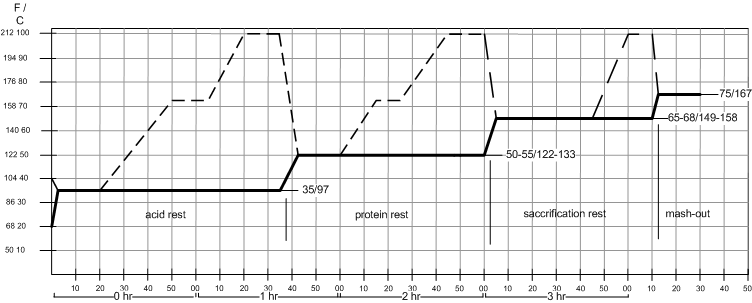This article tries to explain the various mashing procedures that are of interest to the home brewer. Mashing procedures are basically the application of the Theory of Mashing by mixing the grain with water (mash) and resting this mash at a single or multiple temperatures to activate enzymatic activity which converts the grain solids into wort soluble compounds.
Which mash schedule to choose
This question comes up quite frequently in the form of "What benefit do I get from using a more complicated mash schedule than single temperature infusion?".
Mashing needs to be seen as an extension of the malting process and what wasn't done during the malting of the grain, needs to be done during mashing. And the more modified a malt is, the less mashing steps are necessary to produce a wort suitable for brewing a quality beer. Even worse, by selecting a more intense mashing schedule for a highly modified malt certain steps, like protein conversion, can be overdone and lead to a less optimal wort composition.
Here is a list of some malts showing mashing schedules that work well for them:
- American or British 2-row (Pale malts): single infusion mash
- Durst TurboPils: single infusion mash
- Durst Pilsner: single infusion or 2 step infusion
- Briess Pilsen: 2 step infusion / decoction mash
- Weyermann Pilsner: 2 step infusion
- home malted malt: multi step infusion / deoction mash
Single temperature infusion mash
The single infusion mash uses a single temperature rest at which the beta and alpha amylase enzymes are active to convert the malt starches into wort sugars. The higher the mash temperature is, the lower the limit of attenuation of the resulting wort will be. This is the most common mash schedule among home brewers and craft brewers because it is well suited for American and British 2-row malts which are generally highly modified and don't benefit from a lower temperature rests. It is also well suited for the use of unheated mash tuns (e.g. coolers) which are the preferred mash vessel among most home brewers.

